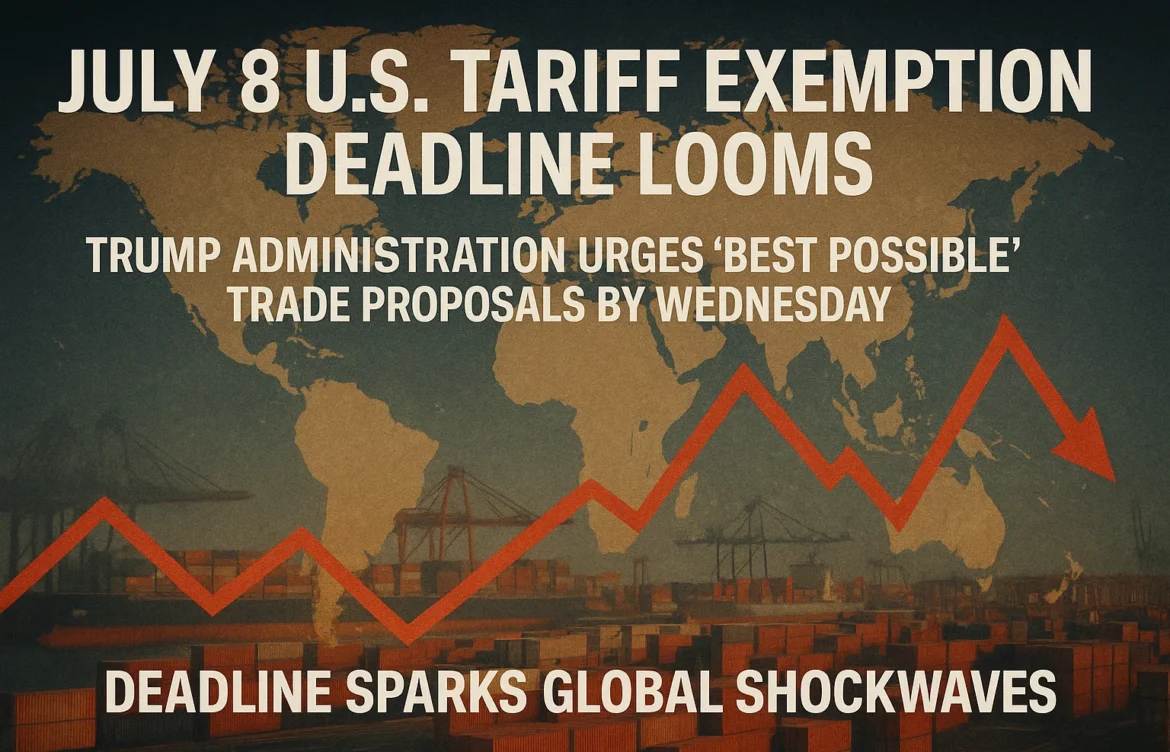
Only 5 Weeks Left Until U.S. Tariff Reinstatement — Global Trade on Edge
As the July 8 deadline for the U.S. tariff exemption draws near, the Trump administration has issued an urgent diplomatic notice, requesting all major trading partners to submit their “best possible trade negotiation proposals” by Wednesday. This marks a critical turning point in global trade relations and has sent shockwaves across governments and supply chains worldwide.
Global Reaction: A Game of Strategy, Not Panic
🇨🇳 China: Strategic Patience, No Rush to Compromise
China is approaching the situation calmly after the recent Geneva negotiations, where both parties agreed to de-escalate tensions. Beijing is unlikely to respond hastily to the U.S. request. Instead, it will likely wait and observe Washington’s internal moves. China’s position remains firm: no political exchange for tariff relief, protection of its industrial policies, and adherence to WTO-based dispute resolution mechanisms.
🇪🇺 European Union: Tension Mounts, but Divided Within
The EU is under pressure, especially with the threat of high tariffs on autos, wine, and luxury goods. While Germany may lean toward compromise to protect its auto sector, France remains more resistant. The bloc may submit a cautious proposal, but internal divisions could dilute its effectiveness.
🇯🇵🇰🇷 Japan & South Korea: Low-Profile but Concerned
With strong reliance on U.S. exports, these nations fear reinstated tariffs will damage their tech and automotive sectors. They’re likely to propose modest concessions—mainly in technology and digital trade—to maintain their preferential access.
Southeast Asia (Vietnam, Thailand, etc.): Walking a Tightrope
These countries, which have benefited from being alternative sourcing hubs, are concerned about being caught in the “transshipment” crossfire. They’ll likely work to prove the authenticity of their local manufacturing to avoid being punished as a backdoor route for Chinese goods.
🇺🇸 U.S. Strategy: Maximum Pressure, Minimal Delay
President Trump’s administration is using a classic pressure tactic: “Submit or face tariffs.” The sudden 48-hour deadline aims to force quick, reactive offers and generate political wins ahead of campaign season. The White House seeks deals that reduce trade deficits, increase U.S. exports, or can be spun as victories to domestic voters.
The message is clear: If you don’t bring something to the table, the U.S. will bring back tariffs.
What Could Happen Next?
- Symbolic proposals will likely flood in from China, the EU, and others—designed to buy time, not solve everything.
- New tariff lists may be announced if responses are deemed inadequate.
- Markets will become volatile—especially in automotive, tech, and consumer goods.
- Logistics disruptions may increase as companies rush to ship before July 8.
What It Means for Importers and Exporters
This is not just another round of trade tension—it’s a warning shot. If you are moving goods between China and the U.S., or sourcing from affected regions:
- Book your shipments early.
- Lock in rates before volatility spikes.
- Prepare for longer-term disruptions if talks fail or if tariffs resume.
Final Thoughts
July 8 could mark a major shift in U.S. trade policy—again. The coming weeks are crucial. Companies should stay alert, plan proactively, and diversify sourcing wherever possible.
